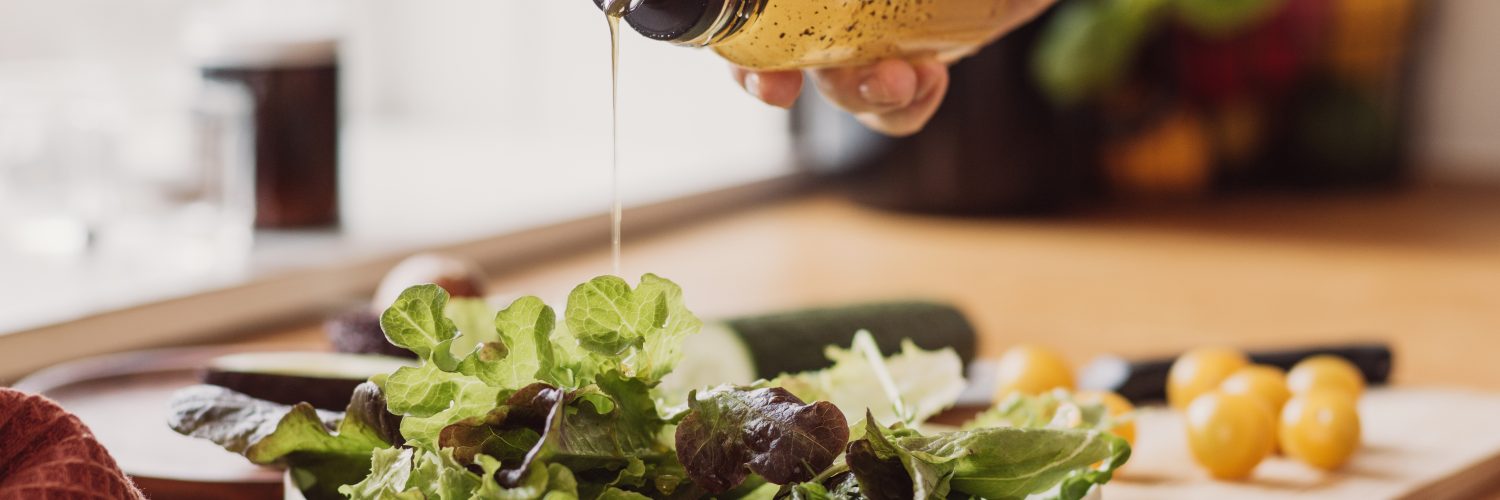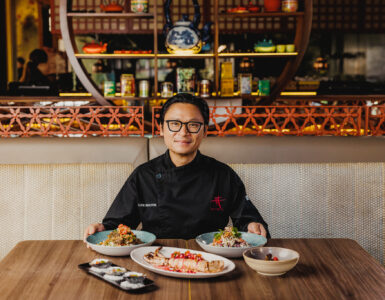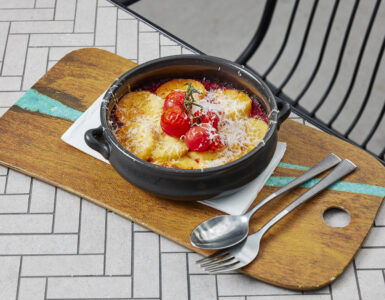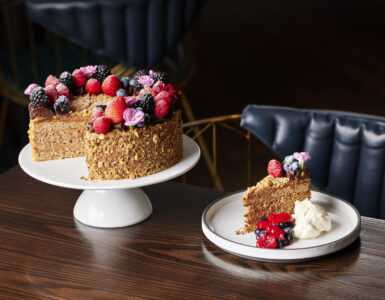A flavoursome dressing can make or break a meal. We spoke with three of our chefs to get their go-to dressing recipes.
Daniel Fox – Chef de Cuisine of Casual Dining at The Star Gold Coast
“Balance is the most important element in any good dish or component,” says Daniel Fox. “Wherever possible use locally sourced quality ingredients and in the case of a salad dressing, fresh vibrant Australian olive oil works well for European style simple dressings.” He’s honed his dressing technique over the years – including cooking for high profile events for fashion brands Dior and Louis Vuitton – in Australia, London, and Canada over the last 20 years.
According to Daniel, a dressing should always complement the ingredients it’s paired with, not overpower them. “When making a mayonnaise style dressing don’t use olive oil, the flavour is too strong use a neutral oil like grapeseed.”
Add a little extra to your dressing recipes with a chef-certified left-of-field ingredient. “Sugar or a natural sweetener works well to balance the punch of vinegar and the fatty olive oil,” says Daniel. “I also like to use a white miso paste to create a savory or umami flavour.”
Try Daniel’s current go-to dressing for yourself. This white miso dressing is great on simple mixed leaves (as a side salad) or with pork belly and green apple slaw.

Daniel’s white miso dressing
2 tbsp White Miso Paste
1 tbsp Dijon Mustard
½ cup White Balsamic Vinegar
3 tbsp Sesame Oil
1 tsp Fine Grated Ginger
1 tbsp Native Honey
1 tsp Tamari
1 tsp Sesame Seeds
White Pepper
Combine all ingredients and whisk in a bowl.
Steven Jones – Executive Chef Treasury Casino
Steven Jones can’t go past a balsamic dressing for a simple salad – he uses a 25-year-old vinegar with extra virgin olive oil. Working as the executive head chef for 10 years at Treasury Casino (and previously for hotels in London and Europe) has taught him a thing or two about dressing a salad. “My favourite is a honey and soy dressing with ginger and toasted sesame oil, chilli and garlic with an Asian salad with noodles, served with salmon, chicken or beef,” says Steven (see recipe below).
“The elements that are important in a dressing is a balance of heat (from the chilli), ginger, toasted sesame oil, saltiness from the soy sauce, and sweetness from the honey,” says Steven. A few taste tests along the way will ensure your flavours are balancing well and won’t overpower the meal. And if things still aren’t quite balancing well, Steven suggests, “acid helps balance bitterness or sweetness when the ingredients are not used in the right levels.”
Steven’s honey-soy dressing
100 ml salt-reduced soy sauce
2 cm piece ginger, peeled and grated
2 cloves garlic, crushed
1 tsp sesame oil
1 tbsp honey
100 mls pure olive oil
1 tablespoon toasted sesame seeds
Combine all ingredients and whisk in a bowl.
Dayan Hartill-Law – Chef de Cuisine at Cucina Vivo
A long and varied career – including work for Quay in Sydney, the Soho Group in London and Dinner by Heston Blumenthal – has allowed Dayan to develop an interest in progressive food and bold flavours.
When it comes to making the perfect salad dressing, Dayan says it all depends on the type of salad. “If it’s tomato and some fresh burrata I have a 35-year-old balsamic that I’ll drizzle with some Australian olive oil, but if I’m making a slaw, I’ll make a lime mayo or sriracha mayo for zing,” he says.
“I’m also enjoying making yeast the hero in dressings recently, a roasted yeast in a vinaigrette gives such full umami flavour.”
The end result all comes down to the quality of ingredients. According to Dayan, the essentials are, “good quality oil, good quality vinegar and good quality mustard.”
Dayan’s roasted lime mayo dressing
3 egg yolks
20g Dijon mustard
2-3 limes depending on juice, zest all 3
400ml grapeseed oil (any neutral oil will do)
Salt and pepper
Combine egg yolks, mustard and lime zest in a bowl using a whisk. As you whisk, gradually add the oil to emulsify with the eggs – if it gets too thick adjust with lime juice. Adjust seasoning and then store.






